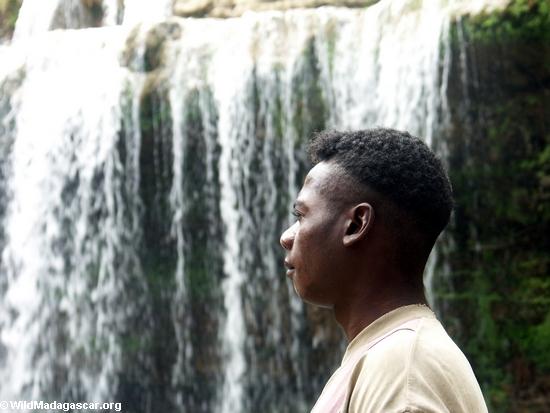Project seeks to understand human origins and migration patterns
Tina Butler, mongabay.com
May 9, 2005
[continued from page 2] On behalf of the Genographic Project, the initiative’s website directly addresses concerns about possible similarities to the HGDP and discredits any problematic links as well as reinforcing the intentions for research. National Geographic concedes that the goals of the two projects overlap to some degree, but that there are significant differences in the clarity of the Genographic Project’s mission and the way in which the program will be carried out. The press release for the project asserts “that an international advisory board will oversee the selection of indigenous populations for testing as well as adhering to strict sampling and research protocols.” The website re-emphasizes that the project is studying the human journey, with no plans for medical research or the patenting of genetic information.
Project coordinators assert that the project is a true collaboration between indigenous populations and scientists, maintaining that they seek to enable communication and promote preservation of indigenous languages and cultures, not misuse or manipulative information for their own means. Since before the project began and throughout its duration, researchers have been and will continue to seek advice and counsel for leaders and members of indigenous communities about their voluntary participation in the project. The website proclaims the Genographic Legacy Project’s commitment to providing educational activities and cultural preservation projects to participating communities, with the public’s active involvement.
 Betsara, a Sakalava man in western Madagascar Photo by Rhett Butler |
Stressing the difference between the HGDP and their own, the website explains, “Fourteen years ago, when the HGDP was first discussed, the language of DNA and genetic anthropology was foreign to all but a few scientists. Today that language is more familiar to many of us, and many of the ethical and privacy issues are more clearly understood by the global community.” Project representatives are adamant about their endeavor’s integrity and just purpose. Dr. Wells states that most of what is presently known about anthropological genetics is based on approximately 10,000 DNA samples donated from a range of indigenous peoples. While these samples have given scientists a broad view of the patterns of human migration, they represent only a small sample of humanity’s genetic diversity. Outlining explicitly the rationale for the project, the website also affirms its endorsement from the necessary parties.
Immediately prior to the launch announcement, the Genographic Project received full approval from the Social and Behavioral Sciences Institutional Review Board (IRB) at the University of Pennsylvania Office of Regulatory Affairs. The IRB operates in compliance with applicable laws, regulation and ethical standards necessary for research involving human participants. Further, there is an Ethics and Privacy section within the project website that addresses such issues and concerns like biopracy, confidentiality and the rights of indigenous peoples. Representatives for the project ensure that bioprospecting will not occur, relating that genetic data will be released into the public domain to promote further research and treated as discoveries as opposed to inventions, and thus will not be patented. The samples will not be used for medical research, analyzed only for historical and anthropological data, with no involvement with insurance or pharmaceutical companies.
|
|
In regard to protecting indigenous participants’ privacy and anonymity, all samples from these populations will be coded by the regional centers and the re-coded when the results are received. Only re-coded data will be accessible in the central database. The link between the locally assigned code and an individual’s name will be kept on file in the region so that the central database cannot connect the two without local involvement. Additionally, procedures will be put in place to prevent comparing particular individuals to the database without National Geographic’s knowledge.
Both sides have taken great pains to present and protect their respective cases. Genographic Project coordinators emphasize that their initiative is a collective effort for a collective cause, to help people better understand their ancient history. With a great amount of optimism, Ted Waitt, founder of the Waitt Family Foundation, believes the project will promote harmonious living across national boundaries and cultural lines by improving and expanding understanding and awareness about shared origins and journeys. Dr. Wells proclaims, “The goals of the projects are twofold: to capture a snapshot of human history locked within our DNA before it disappears forever, and to highlight the untold stories and uncertain future of indigenous peoples worldwide.” On the other side, a wary faction of individuals representing the indigenous people who will provide the backbone of this endeavor, resist such sunny conceptions. The IPCB’s Harry affirms, “We don’t need this speculative information–we already know where we come from.” Regardless of the side one takes, should this project proceed as planned, significant insight into our species’ past is sure to be gleaned.
Page 1: Genographic Project stirs controversy
Page 2: Indigenous groups oppose National Geographic, IBM project
Page 3: Project seeks to understand human origins and migration













